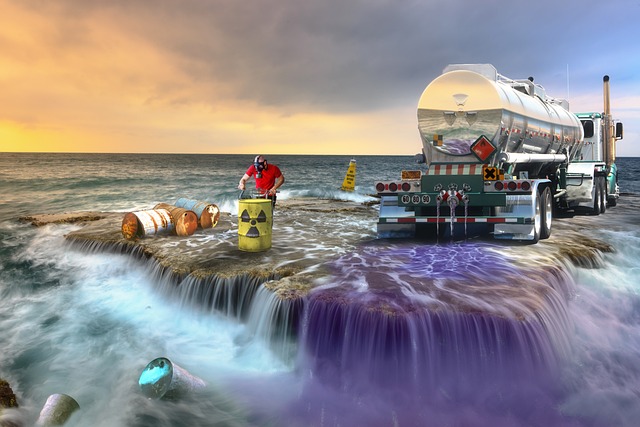By Thu T. A. Nguyen, Publishing Associate: Researcher and Writer at Save the Water™ | March 08, 2024
The rising amount of toxins found in drinking water sources has made water filtration more and more necessary. Water filtering has been in practice for thousands of years, as early as 4000 B.C. Water treatment has been found in all major civilizations: Mayas, ancient Egypt, Chinese empires, the Romans, and so on. Water filtering methods have advanced over time, and surprisingly, many of them are still used to this day. Therefore, knowing the history of water filters can help us use them well. This article aims to introduce you to the most basic ideas behind water filtration.
What can be in the Water?
In the early days, cloudiness (or turbidity) was the main reason for water filtration. But as science progressed, we’ve found bacteria, sediments (sand, clay, and other soil particles), chemicals, and toxins in water. In rare cases, small radioactive particles have also been detected in water.
Water Filtration Methods in Ancient Times
Ancient Sanskrit and Greeks used charcoal, sunlight, boiling, and straining as methods for cleaning water.
From around 1500 B.C., aluminum sulfate, called alum, has been added to water to make it clearer. Alum forces dirt out of water, and lake managers still use it to improve water quality today.
Greek and Roman engineers used zeolites 2700 years ago to build large water-related structures, such as bridges, dams, and harbors. Furthermore, the ancient Mayans used quartz and zeolite to make complex water-cleaning systems between 2500 to 1100 years ago.
They used quartz as a sieve and zeolite (a mineral from volcanoes) as a sponge to hold and separate particles from water. These natural crystal materials can remove microbes, metals, and toxins from drinking water.
Water Filtration Methods in Modern Times
In the 1800s, people in Europe used sand filters. During this period, scientists also started to better understand contaminants that couldn’t be seen by the naked eye.
This base knowledge became a major driving force for more effective water treatment in the U.S. in the 1900s. In addition to filtering and reducing turbidity, chlorine was used for the first time in 1908 in New Jersey. Moreover, ozone’s antimicrobial properties were discovered in Europe around this time and became widely used in the 1970s and 1980s.
Starting in the 1960s, it was agreed upon that man-made chemicals were also a problem found in drinking water. At this time, using charcoal for odor and organic chemical removal became more common.
In many cultures, people have tentatively used charcoal to treat water as early as 400 B.C. Activated charcoal (or activated carbon) is a form of charcoal that undergoes further processes to filter out more toxins. This material is often seen in many applications:
- Gas masks
- Medicine
- Agriculture
- Water purification, like powdered activated charcoal (PAC) and granular activated charcoal (GAC)
Advancements in Membrane Filtration
Besides the use of various natural materials for filtration, man-made materials have been used in water purification since the 1980s. After 30 years of development, porous membranes have become an economical way to treat drinking water. There are a variety of membranes serving different purposes.
The first class of membranes, called pressure-driven filters, differs by pore (hole) sizes. They remove stuff from the water based on how big they are. Their pore sizes range from 0.1 to 0.001 µm. Microfiltration membranes, with the largest pore size of 0.1 µm, won’t let sediment, algae, and bacteria through. Ultrafiltration membranes, with a pore size of 0.01 µm, will remove small colloids and viruses. Nanofiltration membranes will only allow anything smaller than 0.001 µm through, removing things like larger divalent ions of certain salts.
Another type of man-made filter is reverse osmosis (RO), also a pressure-driven process, that was first tested in the 1960s. Since then, several materials have been used to produce membranes for RO.
To understand how the RO process works, we first have to understand osmosis. Osmosis happens when a penetrable divider separates two liquids with different contents. Naturally, water moves from the side with a lower concentration to the side with a higher concentration.
RO uses force (or pressure) to push the water to do the opposite. In addition, the RO membranes are made to hold salts and other matter with low molecular weight. As a result, low-salt water can be achieved at the end of this process.
Other types of filters, such as electrodialysis (ED), electrodialysis reversal (EDR), and forward osmosis (FO) membranes are also commonly used in desalination processes. These methods use other scientific approaches but aim to achieve the same goals. More information about these membranes can be found here.
Takeaway
We may feel overwhelmed by new contaminants that threaten our drinking water in recent times. They include per- and polyfluorinated substances (PFAS) and microplastics, radioactive materials, antibiotics, heavy metals, and so on. However, we should not forget the constant development of water-cleaning technologies to improve our health needs.
This article focuses only on the basic development of filters. However, other technologies can be used together with water filtration:
- Ultraviolet (UV) water disinfection system
- Ion exchange process
- Biological treatment
- Natural absorbents (e.g. fruit peel waste)
- Solar wastewater treatment
- Ecofriendly magnetic nanoparticles





